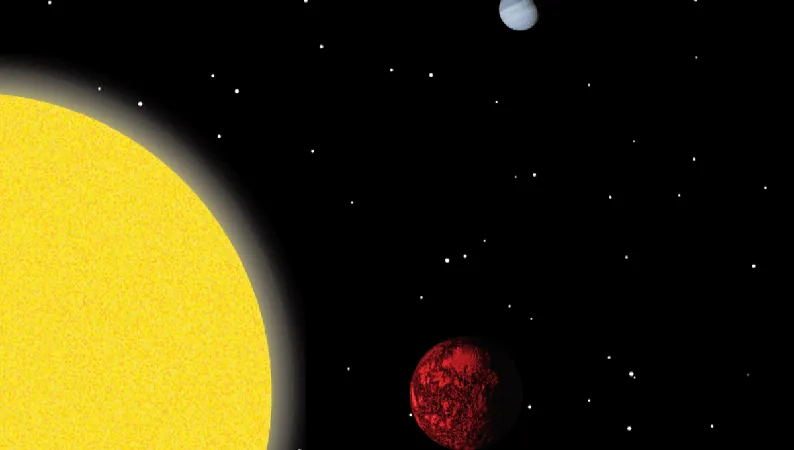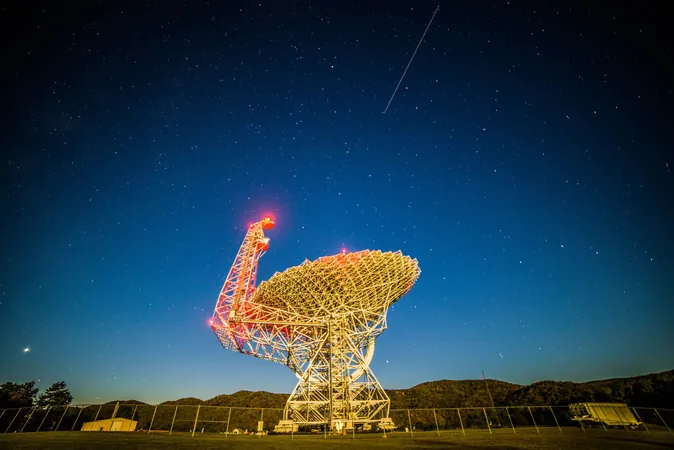
Astronomers Discover the Densest Ultra-Short Period Planet: K2-360 b – A Fiery Enigma 750 Light-Years Away!
2024-11-18
Author: Mei
Introduction
In a groundbreaking discovery, an international team of astronomers has unveiled what could be the densest ultra-short period planet known to date, orbiting a Sun-like star within the K2-360 system, located an astonishing 750 light-years from Earth. The system contains two planets, designated K2-360 b and K2-360 c, with K2-360 b being the striking standout due to its unique characteristics.
K2-360 b: An Ultra-Short Period Super-Earth
K2-360 b makes a full orbit around its star in a mere 21 hours, classifying it as an ultra-short period super-Earth. This rocky planet has a radius that is just under 1.6 times that of our planet, resulting in a volume approximately four times greater. Yet, it possesses a mass an incredible 7.7 times that of Earth, leading to a density that rivals lead—it’s almost double that of our home planet!
Remarkable Density
According to lead author John Livingston from the Astrobiology Center in Tokyo, “K2-360 b is truly remarkable – it’s as dense as lead, packing nearly 8 Earth masses into a ball only slightly larger than our planet.” This extraordinary density is a significant finding, as it provides insights into the nature of ultra-short period planets, which orbit their stars in less than a day.
Geological Intrigue
Geologically intriguing, K2-360 b is thought to be covered in a molten ocean due to the extreme heat it absorbs from its close stellar proximity. However, this wasn't always the case. Researchers hypothesize that K2-360 b may have once harbored a thick gaseous atmosphere similar to that of Uranus or Neptune. Over time, as it spiraled closer to its star, this atmosphere could have been stripped away, leaving behind its current rocky state.
Significance of the Discovery
Co-author Davide Gandolfi from the University of Turin emphasized the significance of this discovery: “This planet gives us a glimpse into the possible fate of some close-in worlds, where only the dense, rocky cores remain after billions of years of evolution.”
K2-360 c: The Other Planet
In contrast, the second planet in the K2-360 system, K2-360 c, presents its own mysteries. Unlike K2-360 b, it does not transit in front of the star from our viewpoint, indicating that its orbit is tilted in relation to its companion. Interestingly, astronomers estimate K2-360 c to be a staggering 15 times more massive than Earth and it takes 9.8 days to complete an orbit. This gravitational giant might have played a pivotal role in shaping the orbit of K2-360 b.
Dynamical Models
Co-author Alessandro Trani from the Niels Bohr Institute noted that “Our dynamical models indicate that K2-360 c could have pushed the inner planet into its current tight orbit through a process called high-eccentricity migration.” This phenomenon involves complex gravitational interactions that could elongate the orbit of the inner planet before circularizing it through tidal forces, likely resulting from K2-360 c’s influence or its own axial tilt.
Colossal Iron Core
To account for K2-360 b's exceptional density, the research team posits that it boasts a colossal iron core. This core is thought to represent an astounding 48 percent of the planet's total mass—almost four times the amount of iron found on Earth. According to Mahesh Herath, a PhD candidate at McGill University, “Our interior structure models indicate that K2-360 b probably has a substantial iron core surrounded by a rocky mantle. Its surface may be covered in magma due to the intense heat it receives from its star.”
Conclusion
As astronomers continue to unravel the secrets of planets like K2-360 b, they gain valuable insights into the processes that govern planet formation and evolution under a variety of conditions across the galaxy. The discovery emphasizes how diverse planetary systems can be, even those nearby in cosmic terms, and sets the stage for further exploration into the mysteries of exoplanets. Keep your telescopes ready—K2-360 b could be just the tip of the iceberg in our quest to understand distant worlds!




 Brasil (PT)
Brasil (PT)
 Canada (EN)
Canada (EN)
 Chile (ES)
Chile (ES)
 España (ES)
España (ES)
 France (FR)
France (FR)
 Hong Kong (EN)
Hong Kong (EN)
 Italia (IT)
Italia (IT)
 日本 (JA)
日本 (JA)
 Magyarország (HU)
Magyarország (HU)
 Norge (NO)
Norge (NO)
 Polska (PL)
Polska (PL)
 Schweiz (DE)
Schweiz (DE)
 Singapore (EN)
Singapore (EN)
 Sverige (SV)
Sverige (SV)
 Suomi (FI)
Suomi (FI)
 Türkiye (TR)
Türkiye (TR)